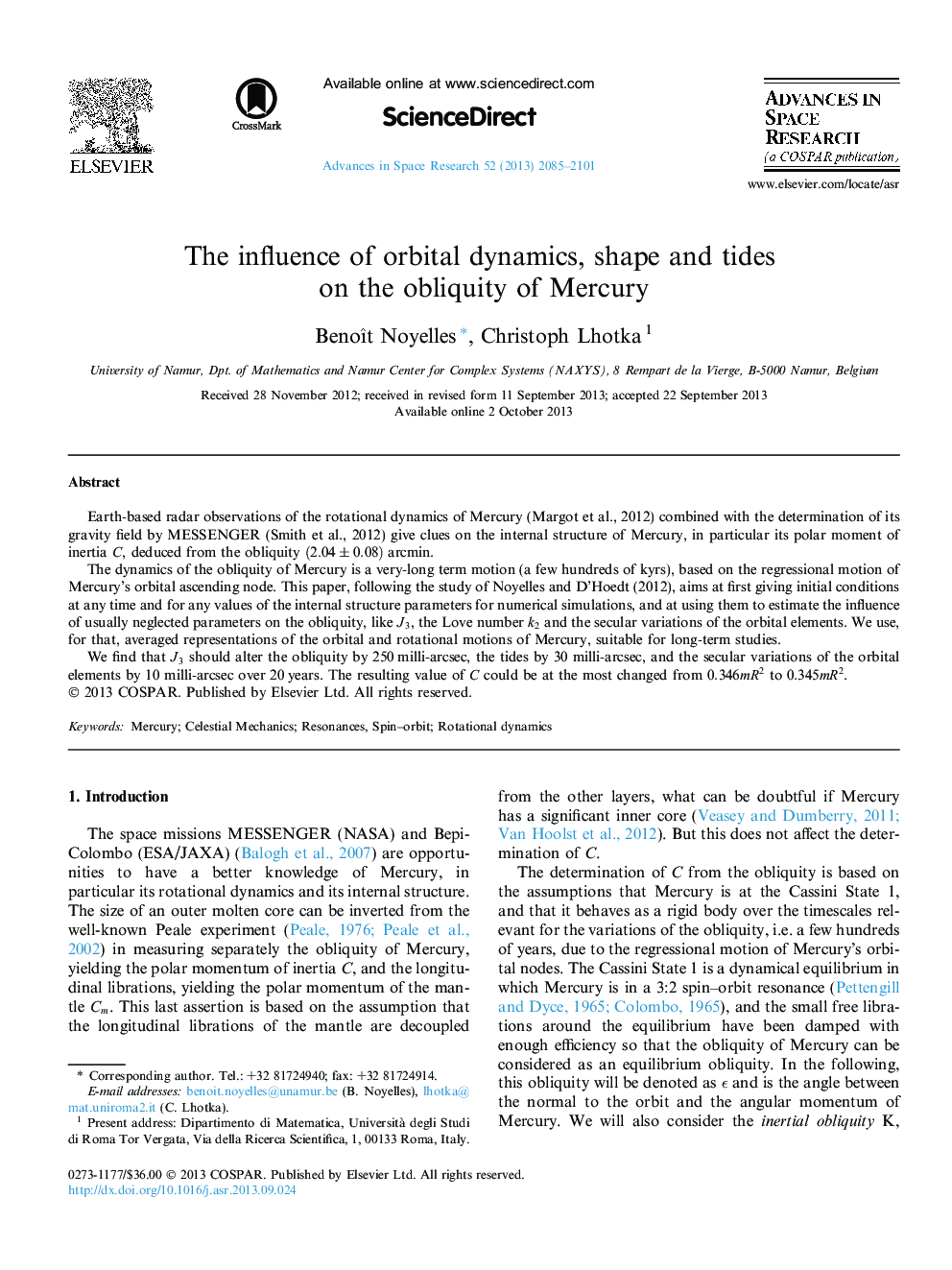| Article ID | Journal | Published Year | Pages | File Type |
|---|---|---|---|---|
| 1765289 | Advances in Space Research | 2013 | 17 Pages |
•We perform a long-term theory of Mercury’s obliquity, depending on its internal structure.•We estimate the influence of the shape of Mercury, the tides and secular effects on its obliquity.•This slightly affects the determination of the moment of inertia.
Earth-based radar observations of the rotational dynamics of Mercury (Margot et al., 2012) combined with the determination of its gravity field by MESSENGER (Smith et al., 2012) give clues on the internal structure of Mercury, in particular its polar moment of inertia CC, deduced from the obliquity (2.04±0.08)(2.04±0.08) arcmin.The dynamics of the obliquity of Mercury is a very-long term motion (a few hundreds of kyrs), based on the regressional motion of Mercury’s orbital ascending node. This paper, following the study of Noyelles and D’Hoedt (2012), aims at first giving initial conditions at any time and for any values of the internal structure parameters for numerical simulations, and at using them to estimate the influence of usually neglected parameters on the obliquity, like J3J3, the Love number k2k2 and the secular variations of the orbital elements. We use, for that, averaged representations of the orbital and rotational motions of Mercury, suitable for long-term studies.We find that J3J3 should alter the obliquity by 250 milli-arcsec, the tides by 30 milli-arcsec, and the secular variations of the orbital elements by 10 milli-arcsec over 20 years. The resulting value of CC could be at the most changed from 0.346mR20.346mR2 to 0.345mR20.345mR2.
